The Jakarta MRT is one of Southeast Asia’s newer rapid transit lines, with the 15.7km-long Phase 1 having opened on 24 March 2019. The USD 1.2 million system is Jakarta’s first full “Metro” line, and is intended to eventually be expanded into a multi-line network of its own.
The line has been operating for five years now at the time of writing, and in September 2023 reported reaching an average ridership of 100,968 passengers daily. I wanted to see this system for myself, and during my visit to the megacity last year I spent some time travelling on the MRT. To summarise, I found its prospects as a transit system to be quite promising.
Route Profile & Rolling Stock
The Jakarta MRT in its current form consists of a 13-station 15.7km line running from Lebak Bulus in south Jakarta, to Bundaran HI in the city centre. The line runs elevated for 7 stations from Lebak Bulus to ASEAN, and then goes underground for the rest of the route from Senayan to Bundaran HI.
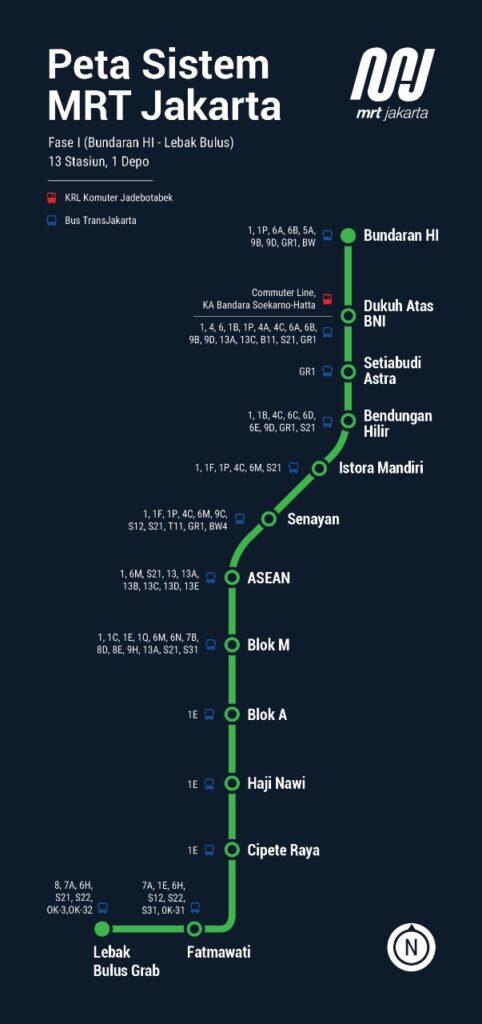
Platform barriers are a prominent feature at all stations, with full height Platform Screen Doors (PSD) installed on the underground platform and the elevated platforms getting half-height ones.
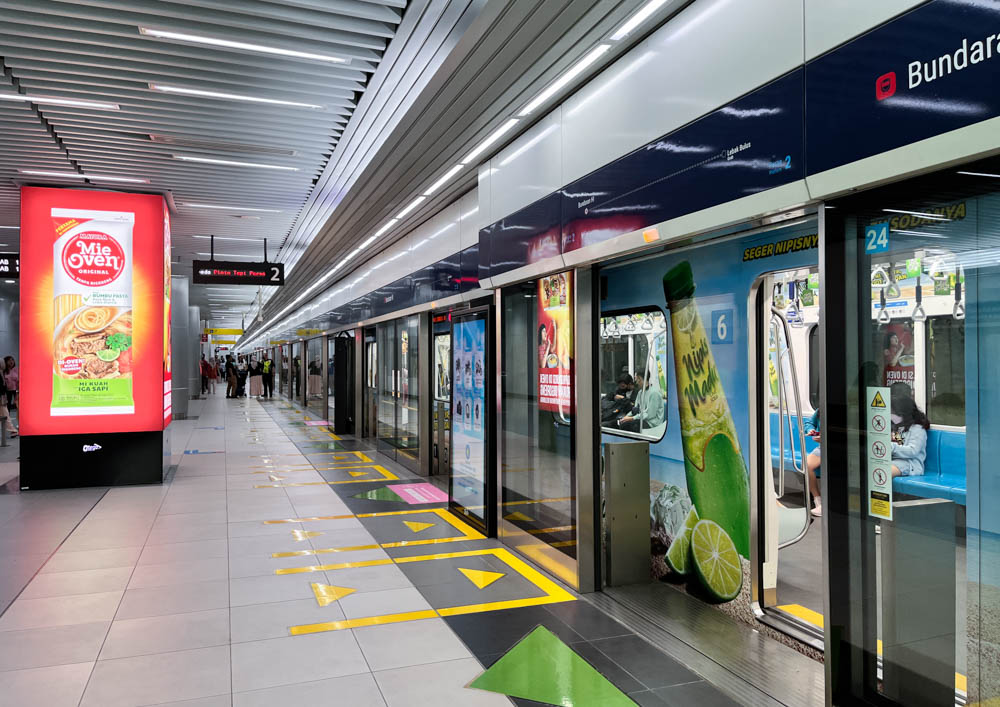
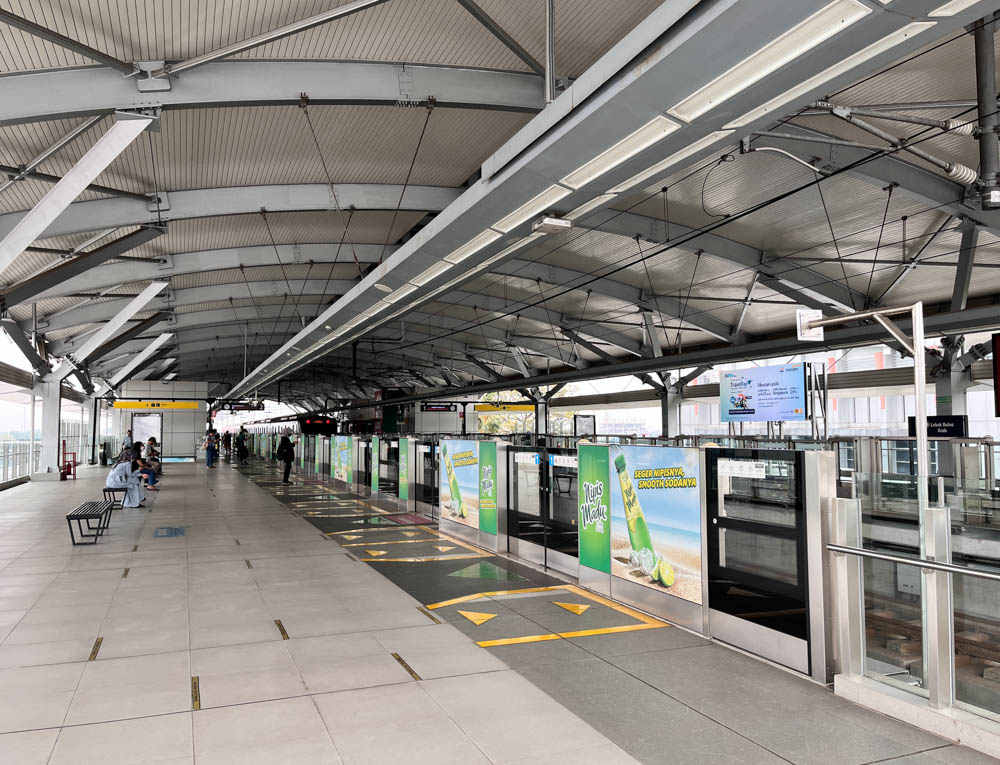
A fleet of sixteen 6-car MRTJ 1000 series trainsets serve the line. These were built by Japan’s Sumitomo Corporation at the Nippon Sharyo plant in Toyokawa and are based at the depot in Lebak Bulus. The trains are not driverless, featuring only ATO GoA2 with the drivers operating the doors and handling emergency driving.
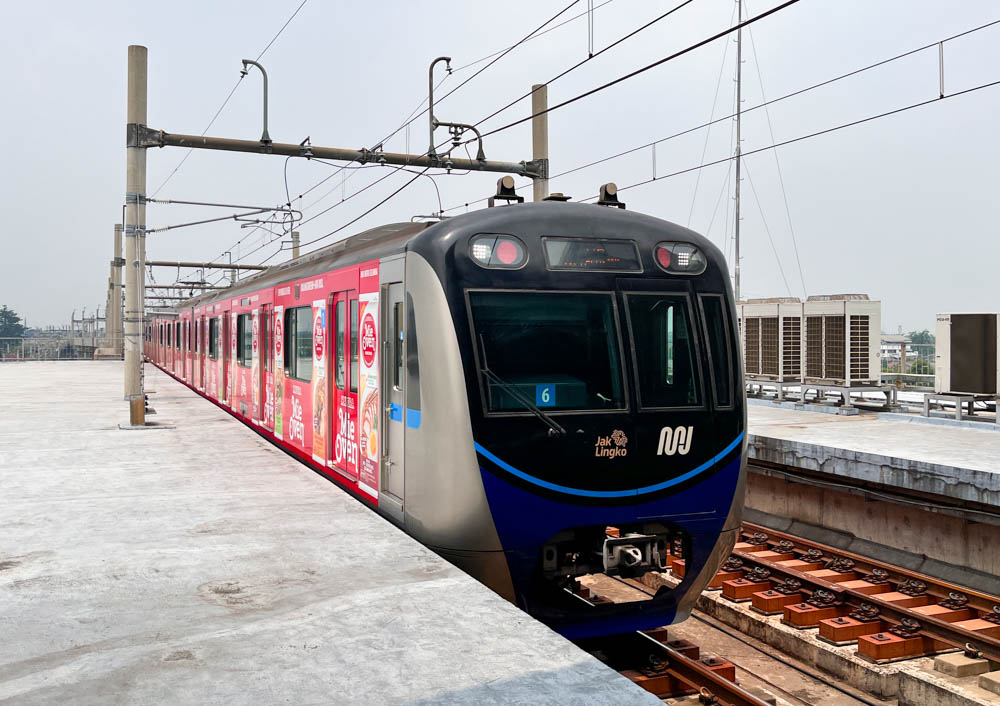
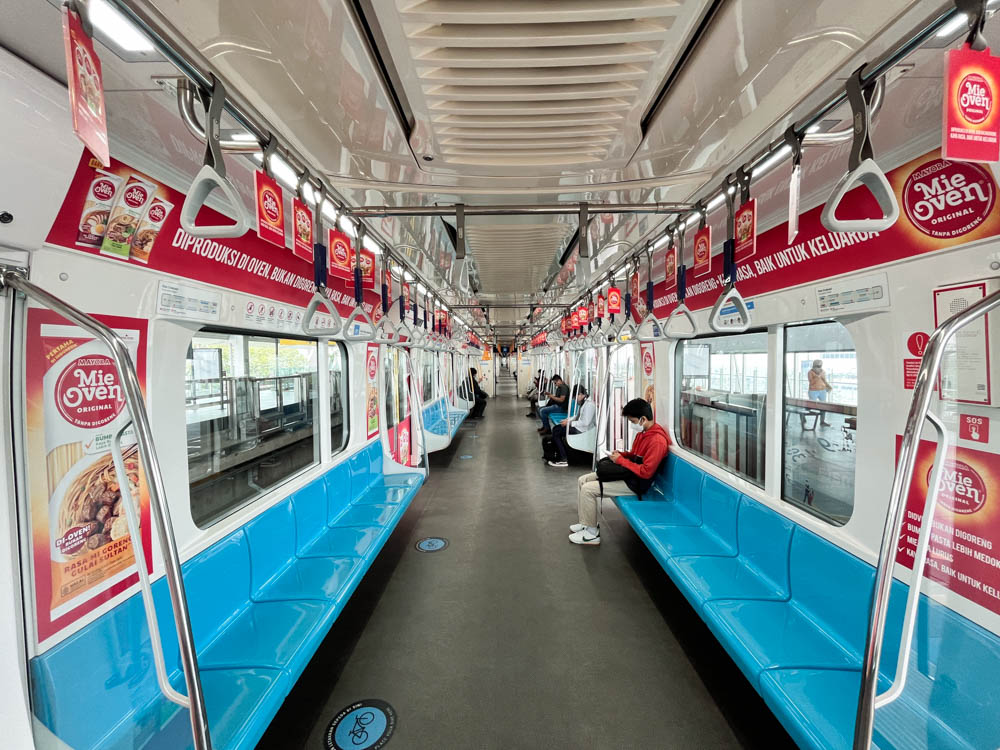
Works are currently underway on Phase 2 of the line, which will take the MRT from Bundaran HI further into the city core and terminating at the Kota station in the Kota Tua (lit. “Old Town”) area.
The system has a strong Japanese influence which isn’t surprising as its development received official development assistance from Japan. This manifests publicly in the design of the trains, which look like they were plucked straight from a Japanese rapid transit line; Somewhat rarely for a metro line, the MRT uses a 1067 mm track gauge – the dominant mainline track gauge in Japan and Indonesia.
The MRT’s place in the Jakarta urbanscape
The Jakarta MRT exists within an urbanscape that already features two established public transit networks. The megacity hosts the dense Transjakarta Bus Rapid Transit (BRT) network and the impressive Kereta Rel Listrik (KRL) commuter rail, both of which are impressive in their own right. The issue is that both systems have different functions: the KRL caters for regional journeys and the Transjakarta buses provide a mix of cross-city and last mile connections to various corners of the city. Without an intermediate-level solution, more commuters have to make cross-city journeys on the KRL and Transjakarta which occupies precious capacity. The end result is crowding on both systems and in the case of Transjakarta, commuters enduring long journeys on packed buses.
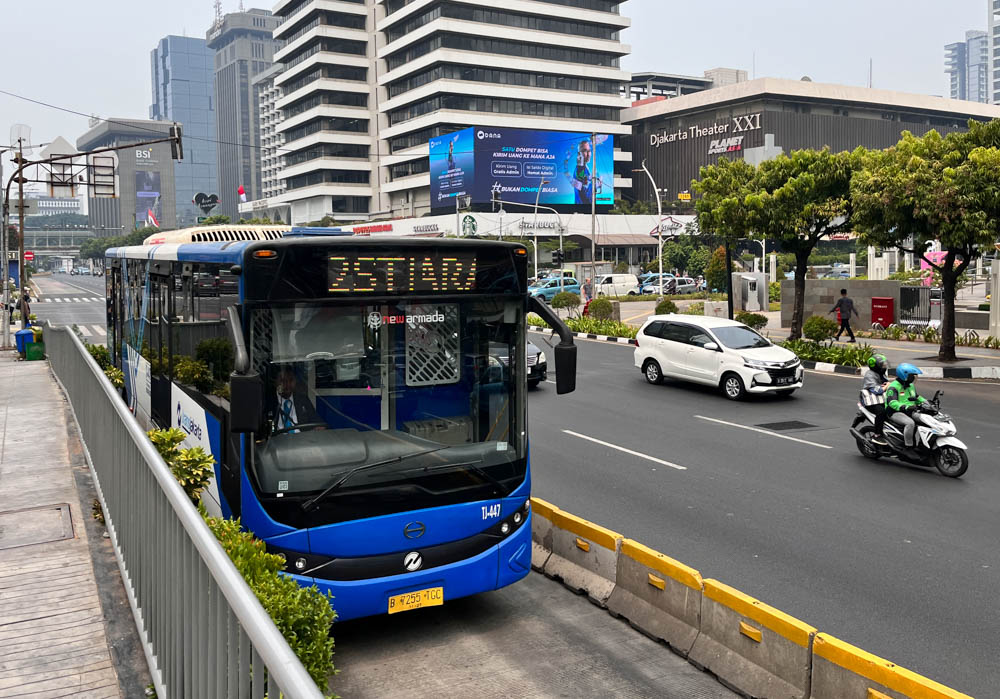
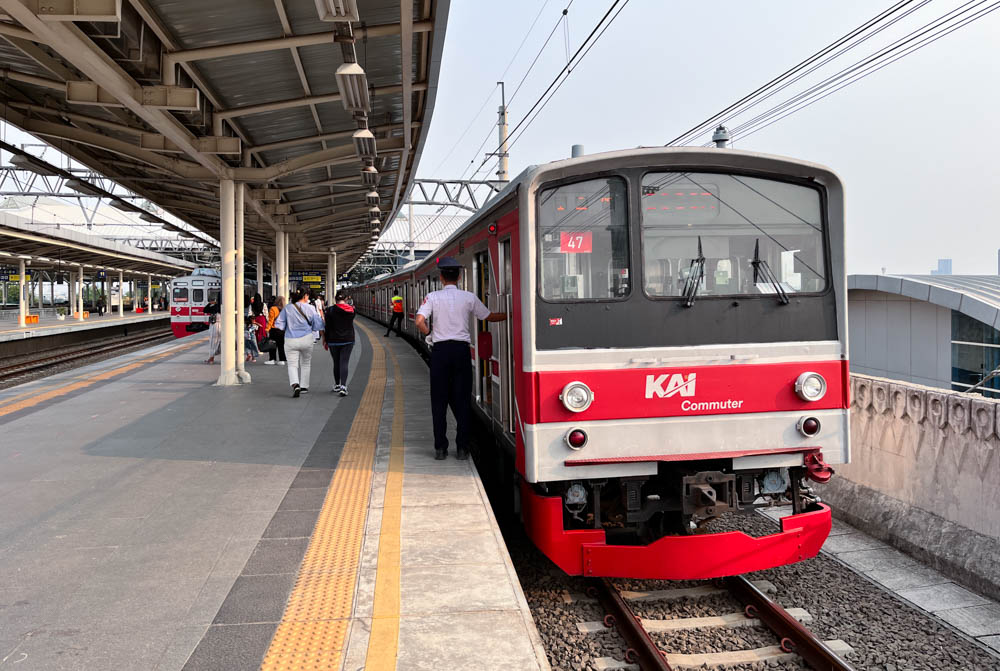
Jakarta evidently hopes a well-oiled Metro network allows commuters to complete cross-city journeys faster and with less strain on the network. With the MRT, a portion of commuters can start their journey on a fast and frequent Metro line and then complete it with Transjakarta for the final mile. Sure, crowding on Transjakarta will still be an issue, but the MRT factor means less long journeys on the BRT network which frees up seats on the buses for other commuters.
It also goes without saying that the MRT brings rail connectivity to areas previously not served by the KRL, which in the context of Jakarta is always a welcome development.
Why is the Jakarta MRT promising?
There’s a lot to like about the Jakarta MRT – for starters the system is clean, modern, and easy to use for first time visitors. A lot of effort has clearly gone into implementing the system as a serious transit line for the future and it shows. The system’s physical infrastructure, for example, are well designed and constructed, and appears to be built to accommodate higher passenger numbers in the future. Elevated stations, for instance, have large concourse spaces; While the underground stations are relatively compact, they also seem equally capable of handling larger crowds, although this will be tested in the future when the system reaches its full length.
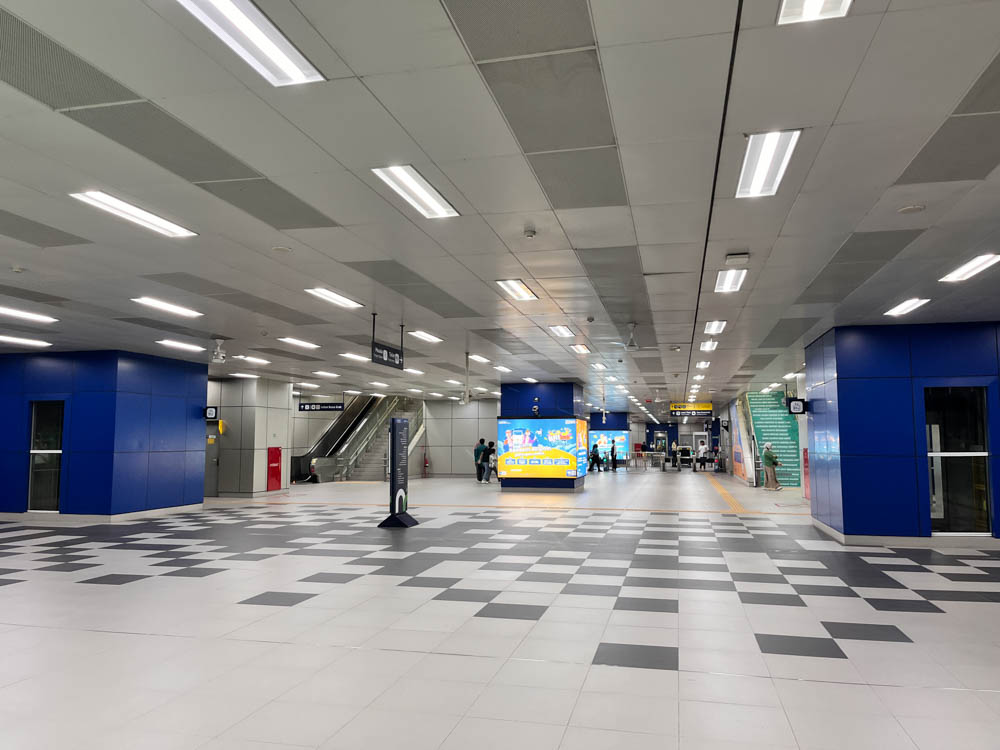
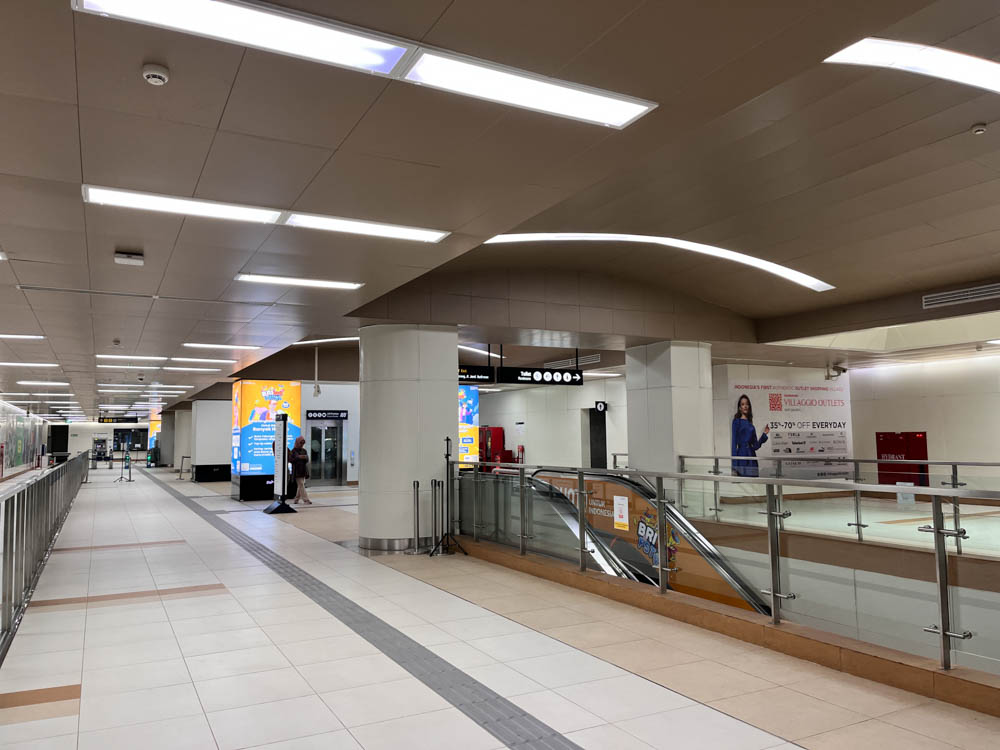
The ride quality is also excellent and miles ahead from the Jabodebek LRT’s slow crawl and tight curves.
One area where the MRT seems to have departed from the norm is the use of a minimalist and unpretentious look, a contrast from the region’s newer and fancier-looking systems. All stations also share identical or similar design features, which probably simplified the design and construction process.
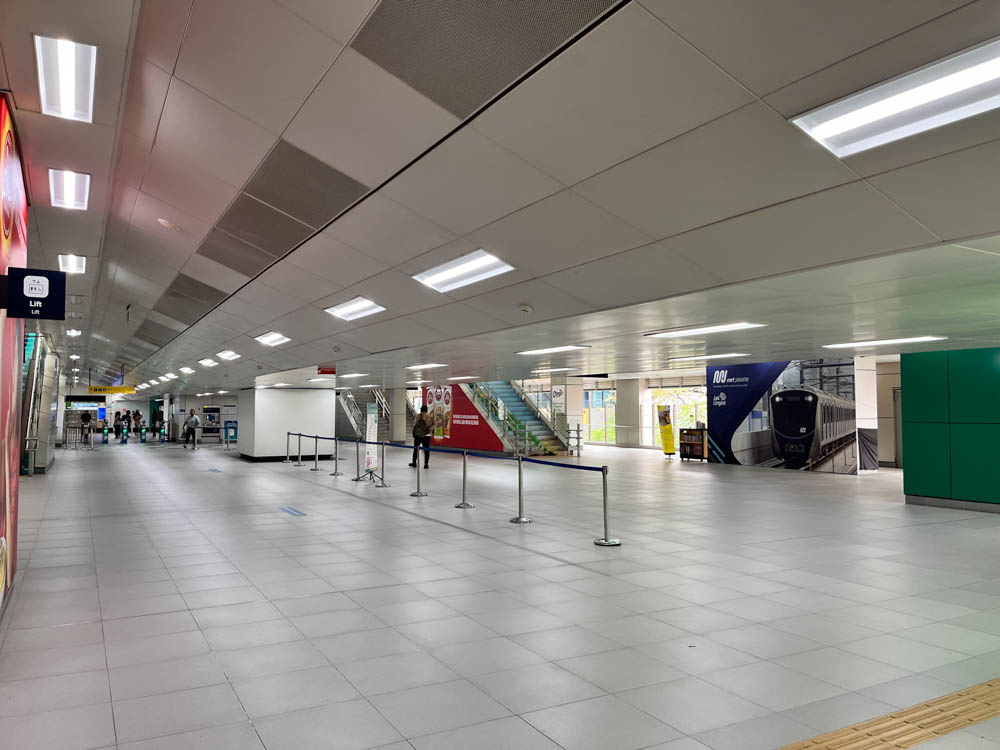
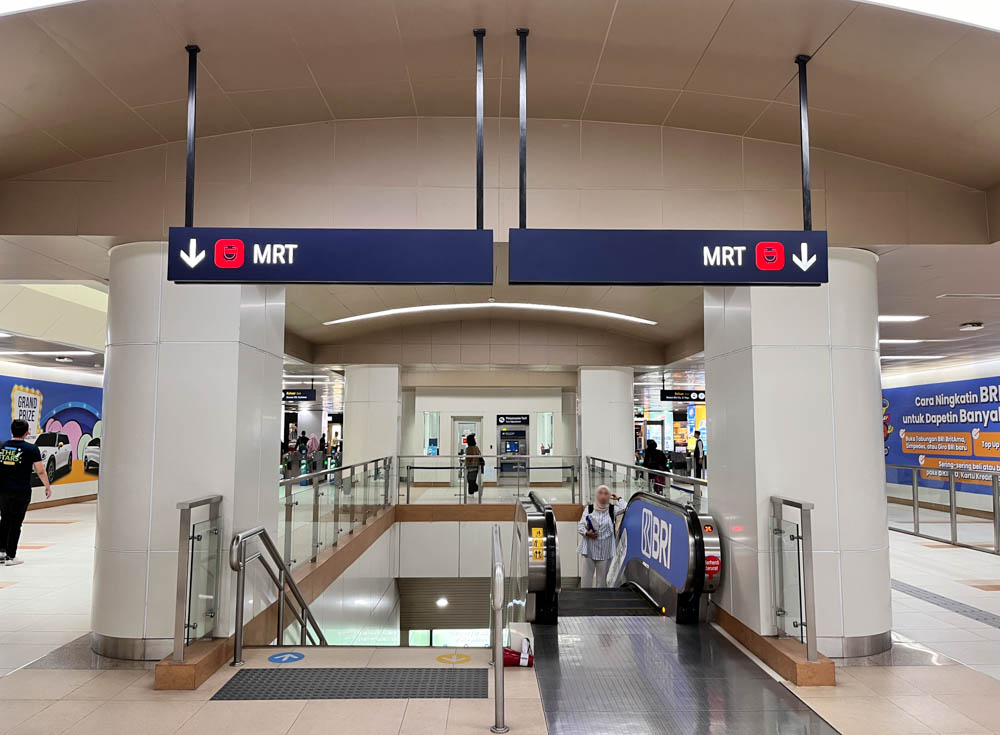
The polish also extends to the wayfinding signage, which in my view is well designed and gives the system a very professional look. The only problem with them is that they are quite small, a surprising oversight after the amount of thought that went into designing the visual and typography styles. You have to sort of squint to read the info screens on board the trains, for example.
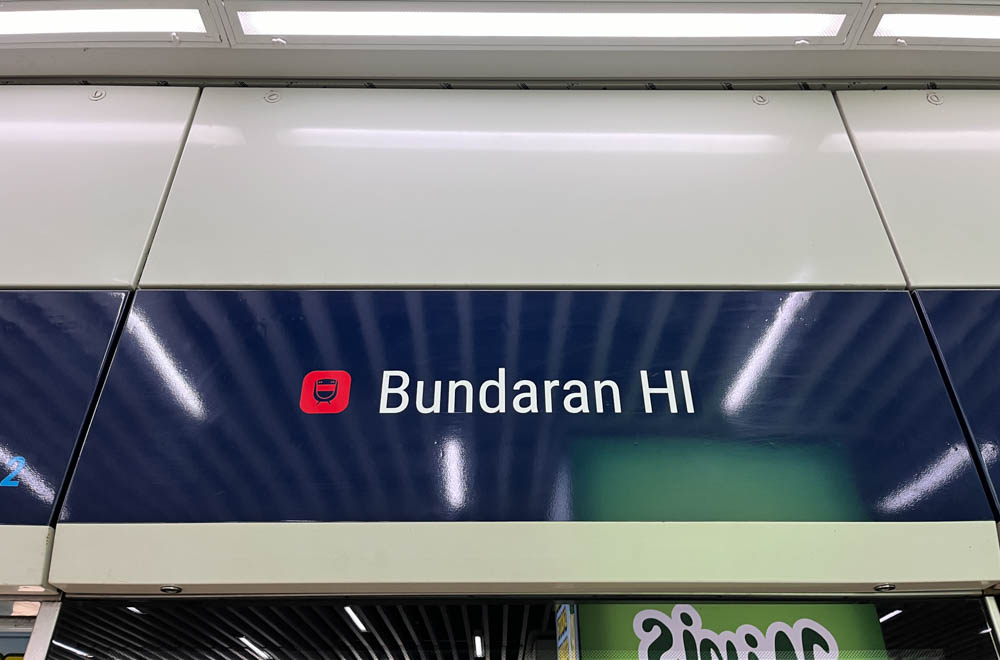
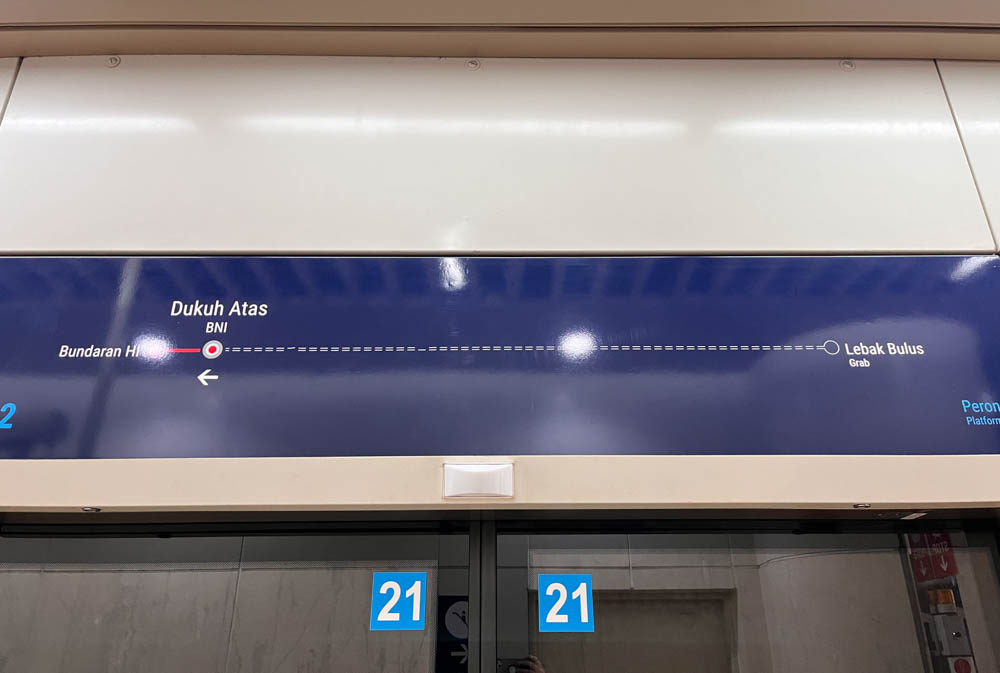
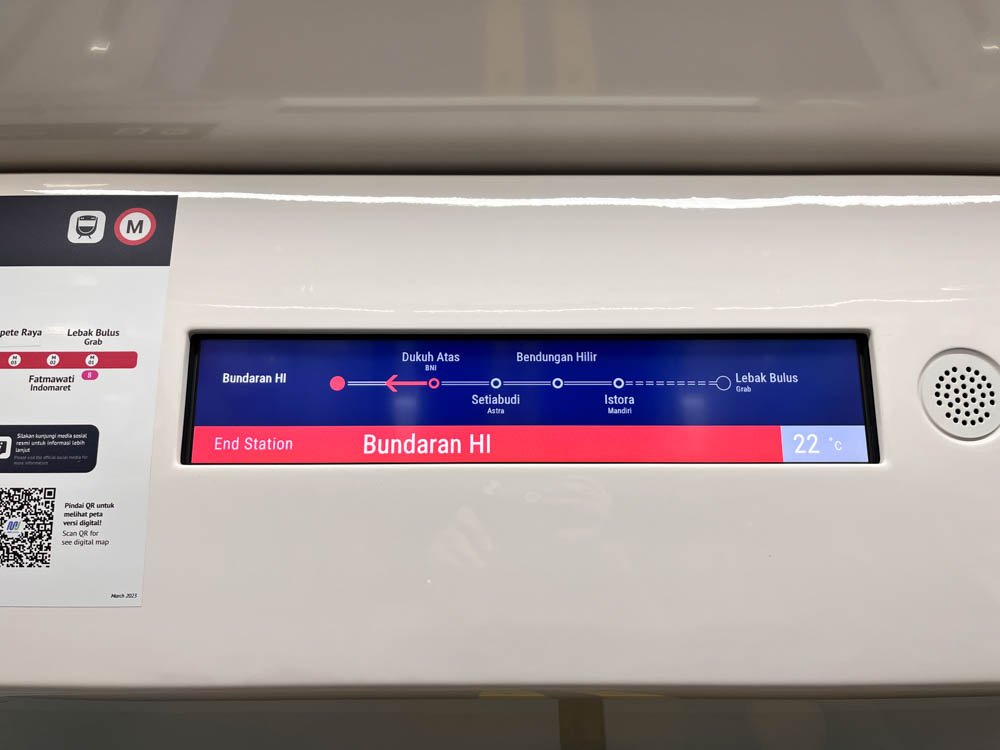
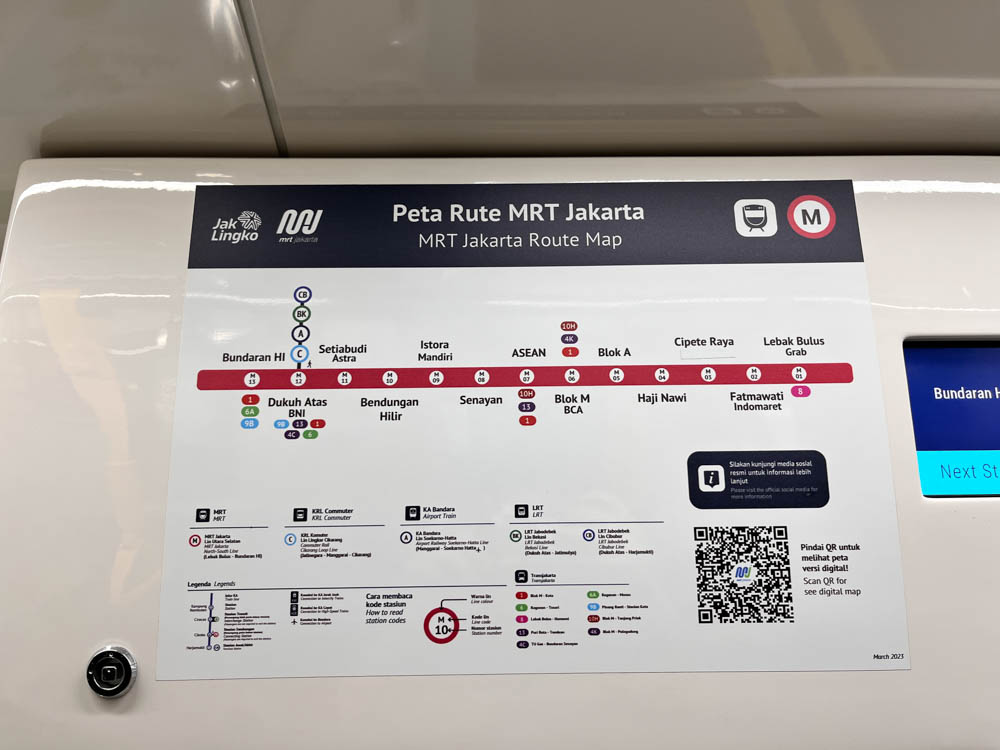
The MRT stations also make an effort to be more accessible in Jakarta’s car-centric urbanscape, with all stations featuring some level of pedestrian and disabled accessibility. Stations adjacent to major commercial centres have signage indicating the nearest exits, while some stations are connected via overhead walkways.
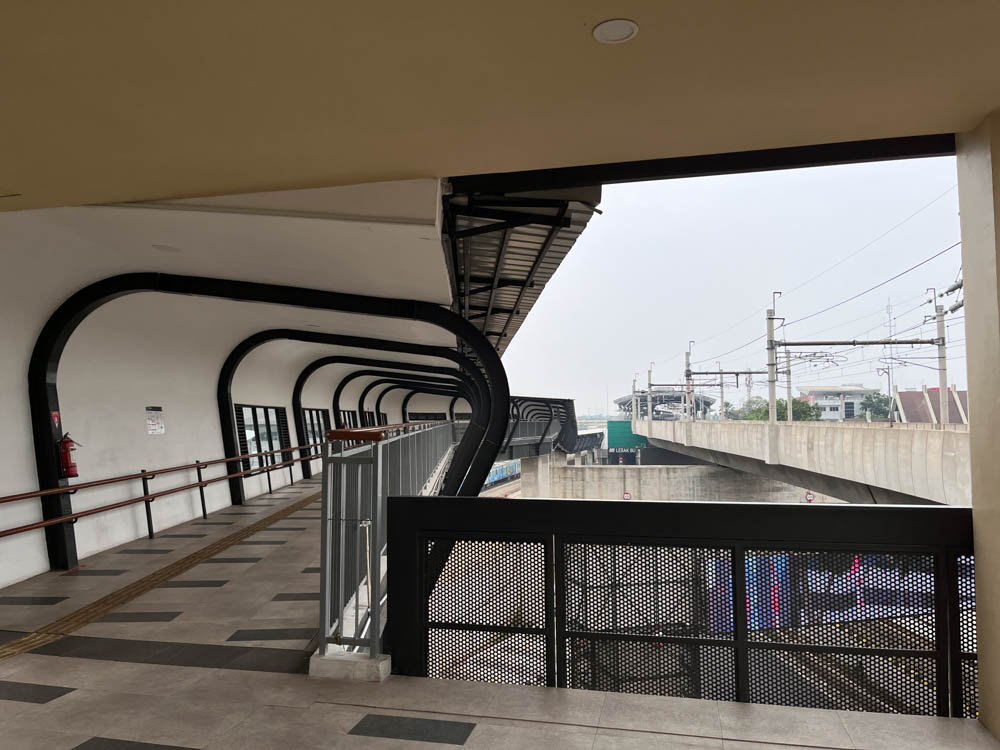
The system also handles connections with Jakarta’s other transit lines decently with excellent physical connection to Transjakarta stops and KRL stations – no paid transfers in Jakarta so a short walk it is. It is not flawless and higher levels of accessibility remain elusive for the system – that is something we’ll talk about further down.

What’s holding the Jakarta MRT back?
There are unfortunately some shortcomings holding the Jakarta MRT back from reaching its full potential, most of which are crucial basic level issues that affect the system’s usability. The biggest issue of them all is that the MRT currently runs on a 5-minute frequency at peak hours, and at a 10-minute frequency at all other times – barely ideal for a new Metro line built from scratch, what more in a urban area of 34 million residents. To give better perspective, some regional commuter rail systems run on tighter frequencies than this, including Jakarta’s own KRL which feature scheduled intervals at less than 10 minutes.
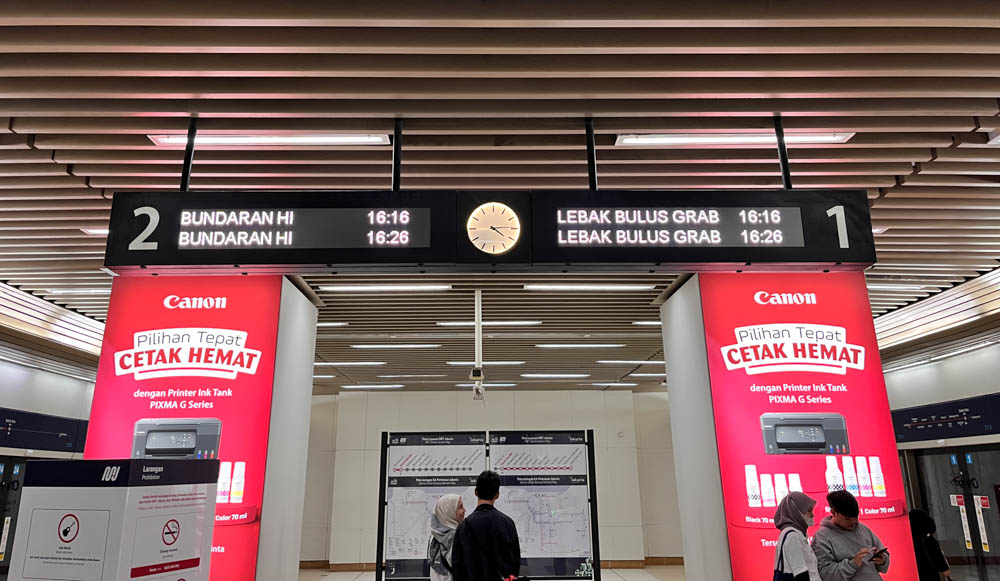
Next, the Jakarta MRT also doesn’t share a common ticketing system with the rest of the city’s public transit network. If you need a ticket for a journey involving an interchange, you can only buy a single or multi-trip ticket to MRT stations at an MRT stations which then requires you to buy a separate ticket for the other service you are connecting to. This isn’t limited to the Jakarta MRT as it is a Jakarta-wide problem, but it’s really not a great thing to see in a modern 21st century Metro line.
To complicate matters, there are somewhat limited numbers of ticket vending machines (TVM) at some MRT stations. For example, Dukuh Atas BNI has only one TVM installed, and this station is an important interchange with the KRL and Airport Railink; Some other stations do better such as Fatmawati with a grand total of three TVMs. Granted, most daily commuters will use their cash cards on their commute rather than buy MRT-only tickets every time. But not everyone has a cash card and some users still need to top up their MRT multi-trip tickets at the TVMs, which makes it perplexing that the system seems to make only a bare minimum effort to cater to them.
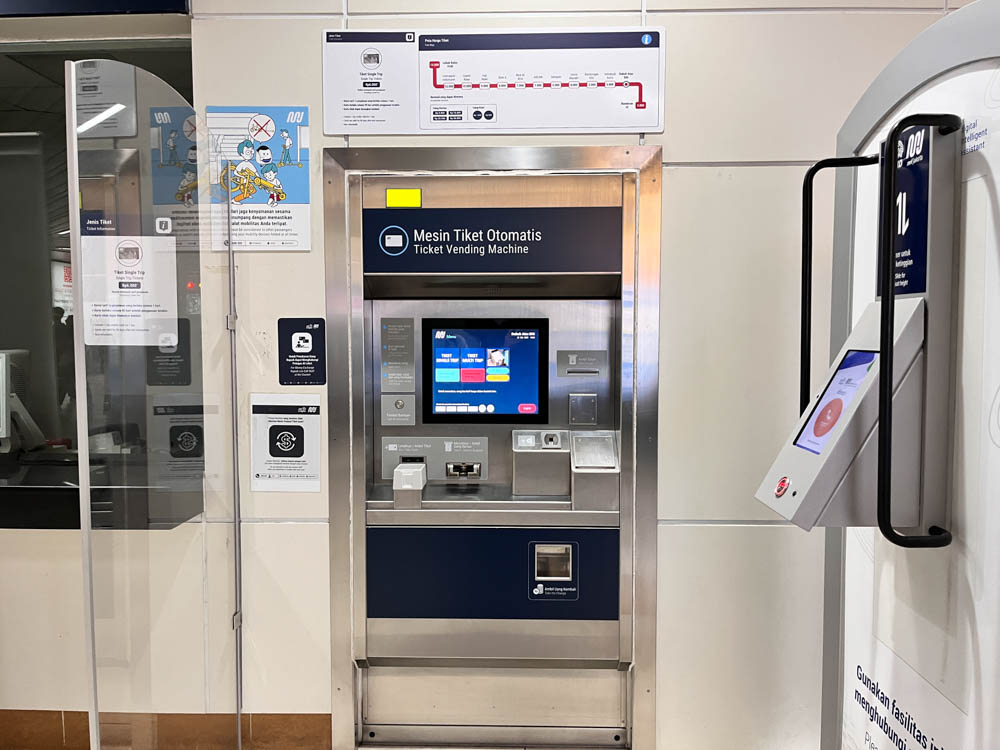
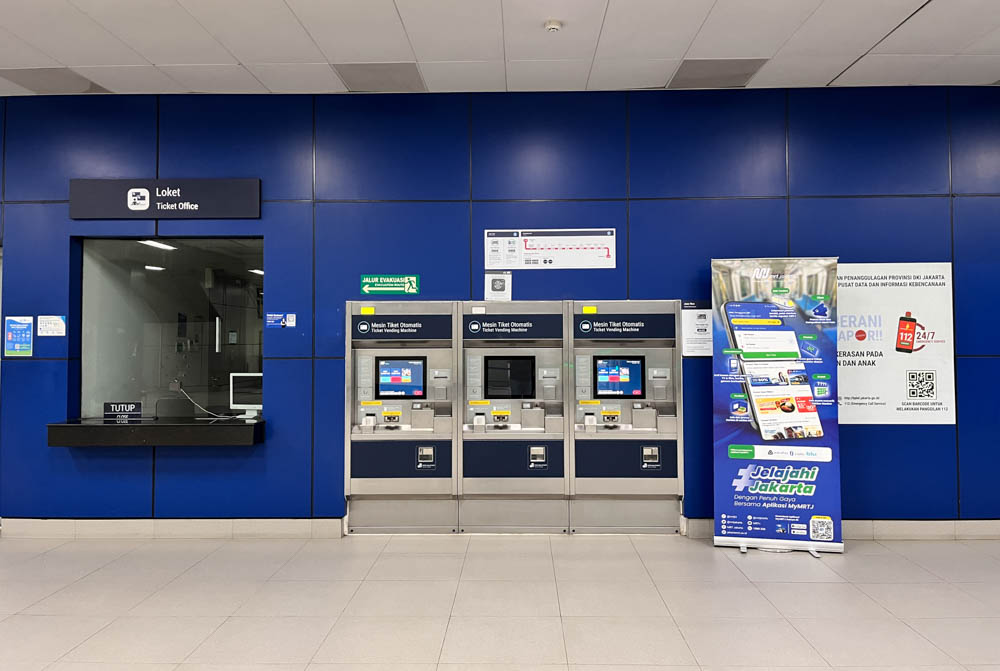
Speaking of cash cards, the MRT is also integrated with Jak Lingko via what appears to be an afterthought retrofit of the ticket gates. That’s all well and good, but the problem is that much like the TVMs, there are limited numbers of Jak Lingko card machines at most MRT stations, some having only a grand total of one. These card machines handle both top ups and purchase of new cards, causing a long queue if multiple users decide they need a top up or a new card at the same time. As if that wasn’t enough, it’s also very common for these Jak Lingko machines to run out of Jak Lingko cards.
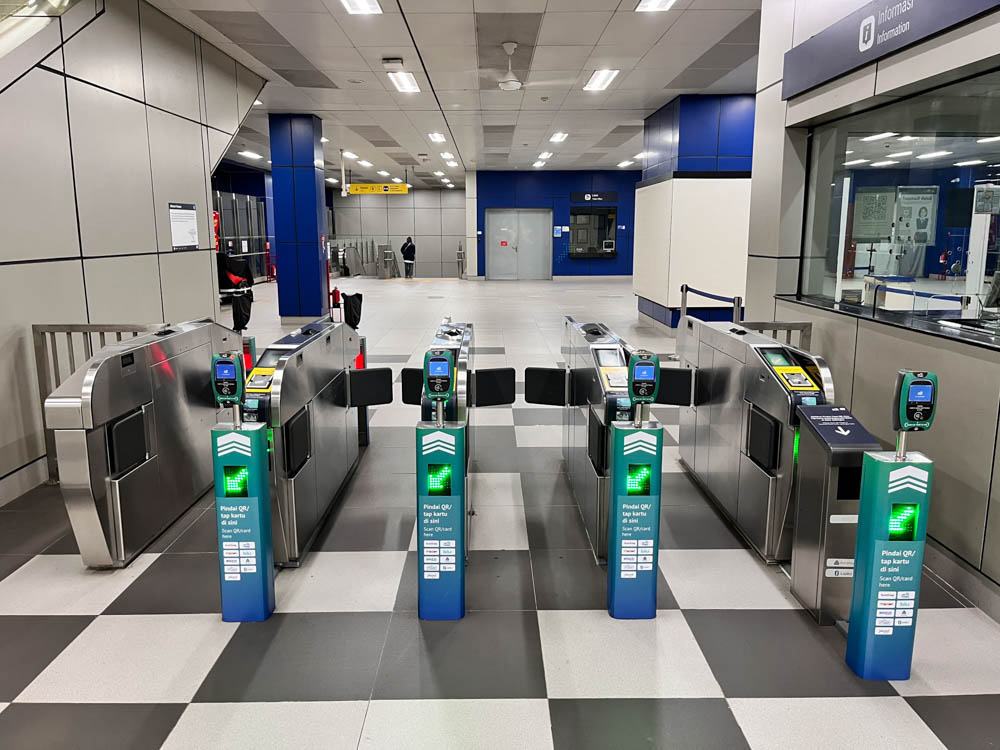
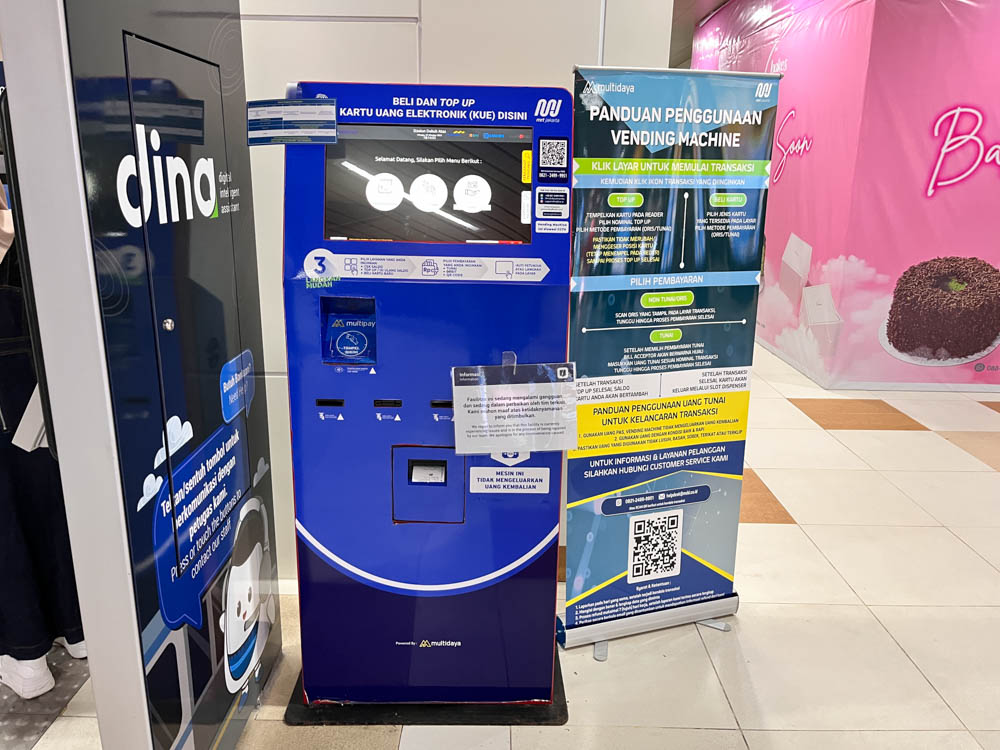
That being said, the MRT still performs much better than the Jabodebek LRT in the ticketing department. The LRT, for instance, doesn’t support Jak Lingko and I couldn’t reload my cash card either.
The last weak link in the Jakarta MRT system is the city’s bad walkability. Now, Jakarta is obviously not a pedestrianised utopia, and the MRT is essentially grafted on top of the existing environment with all its legacy flaws. You don’t really notice this around the underground stations because significant work has been done to beef up the pedestrian connectivity – for example, you can easily walk from Bundaran HI station to the nearby malls on spacious and well kept pedestrian sidewalks. The problem really starts as you head south of the city centre along the alignment, where the sidewalks on the main roads eventually become narrower and less well kept, and then they eventually disappear altogether at one point or another.
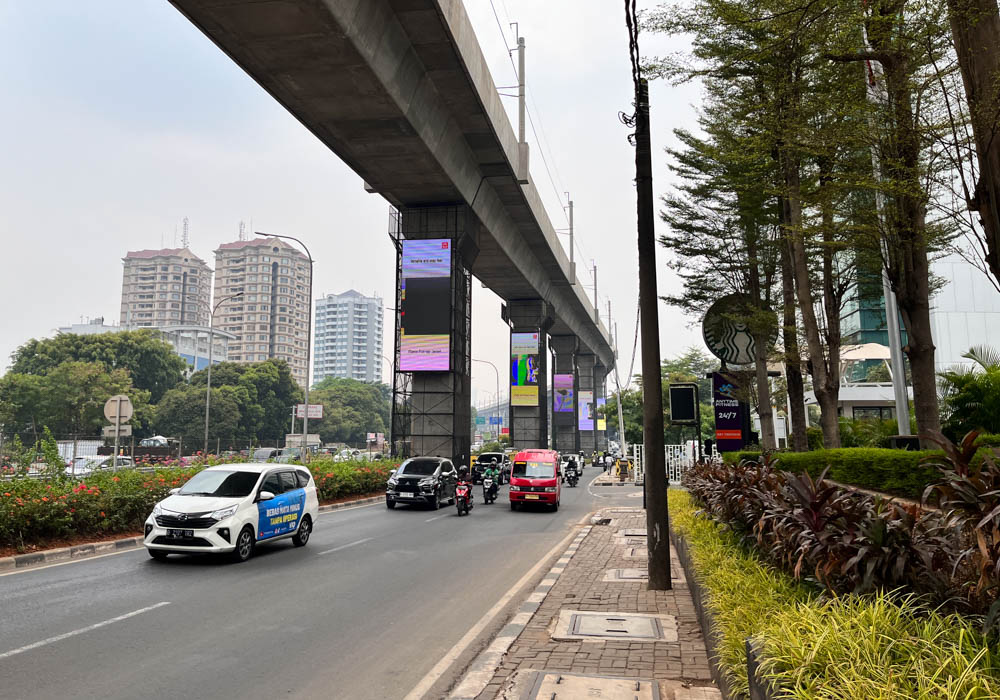
The entrances for the stations are also affected by the narrowing walkways, where not every entrance can fit both stairs and escalators. Some entrances make do with only a single escalator installed.
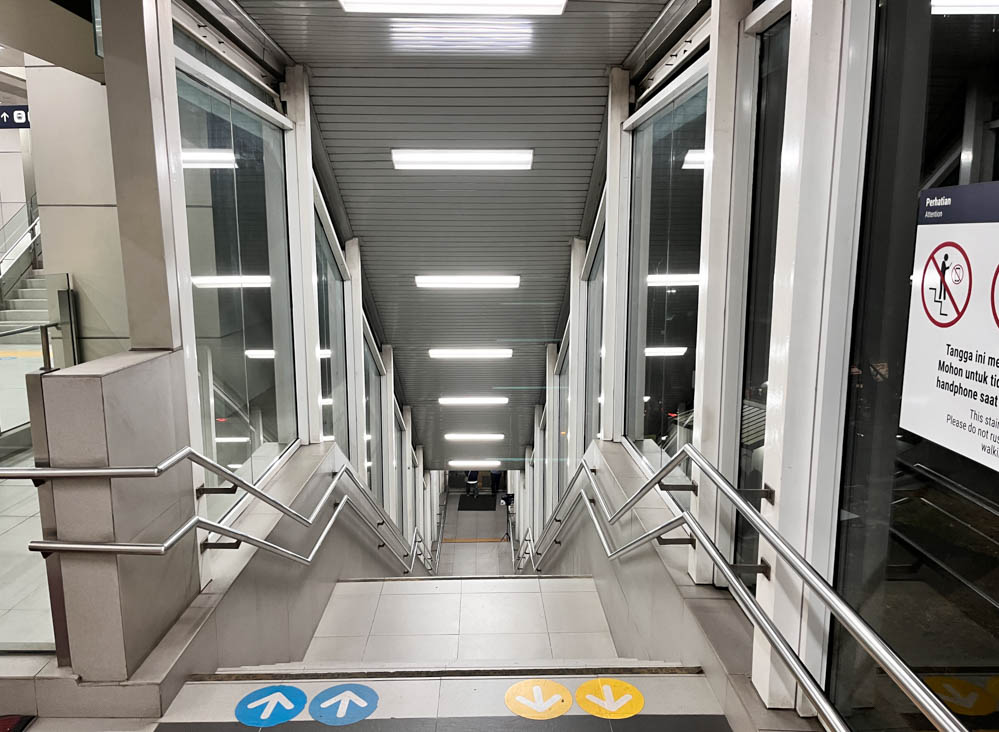
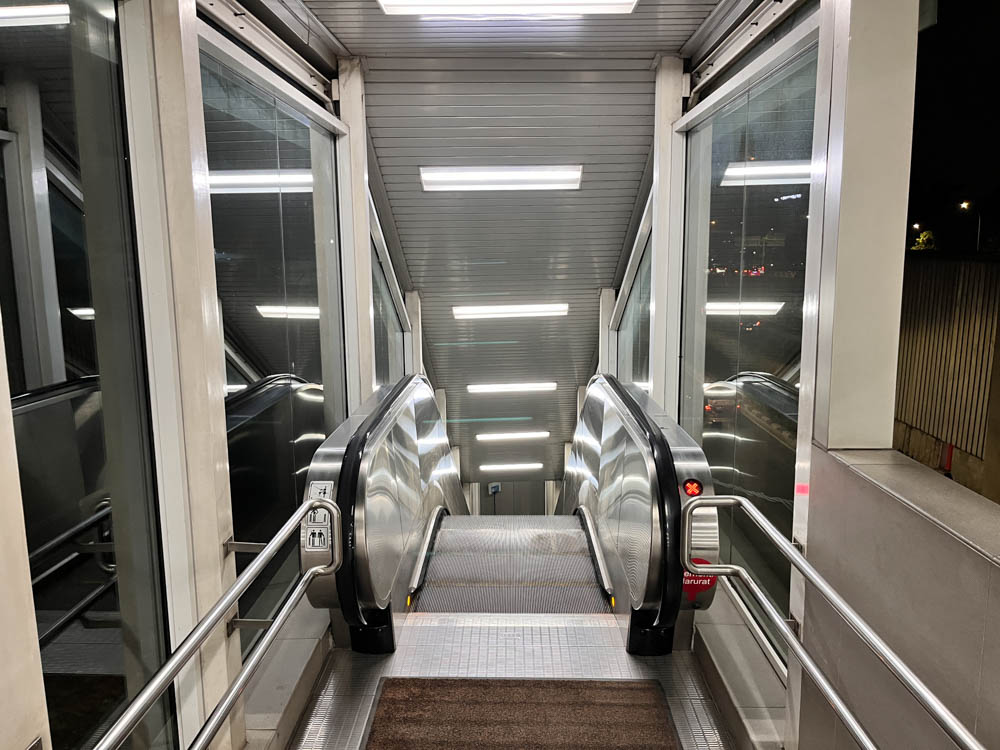
It also doesn’t help that the final two stations, Fatmawati and Lebak Bulus, are located along and off a major tolled road respectively, and the narrow pedestrian sidewalks are interrupted by access roads to residential compounds without properly marked crossings. So you end up with stations that are technically accessible on foot, but the on-the-ground experience is anything but pleasant.
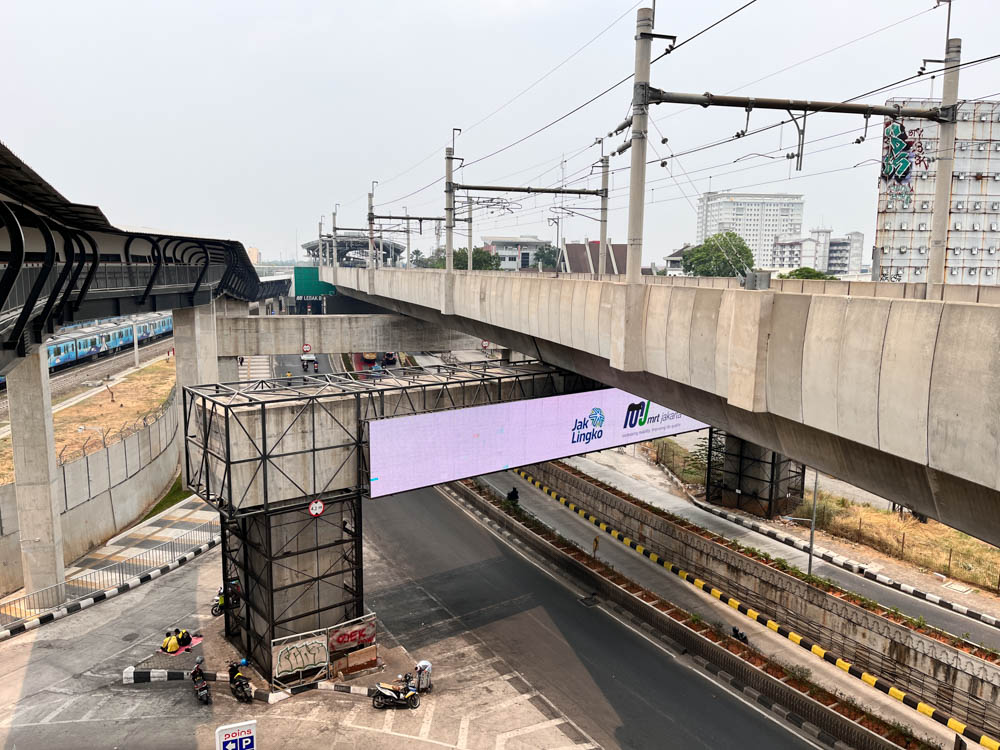
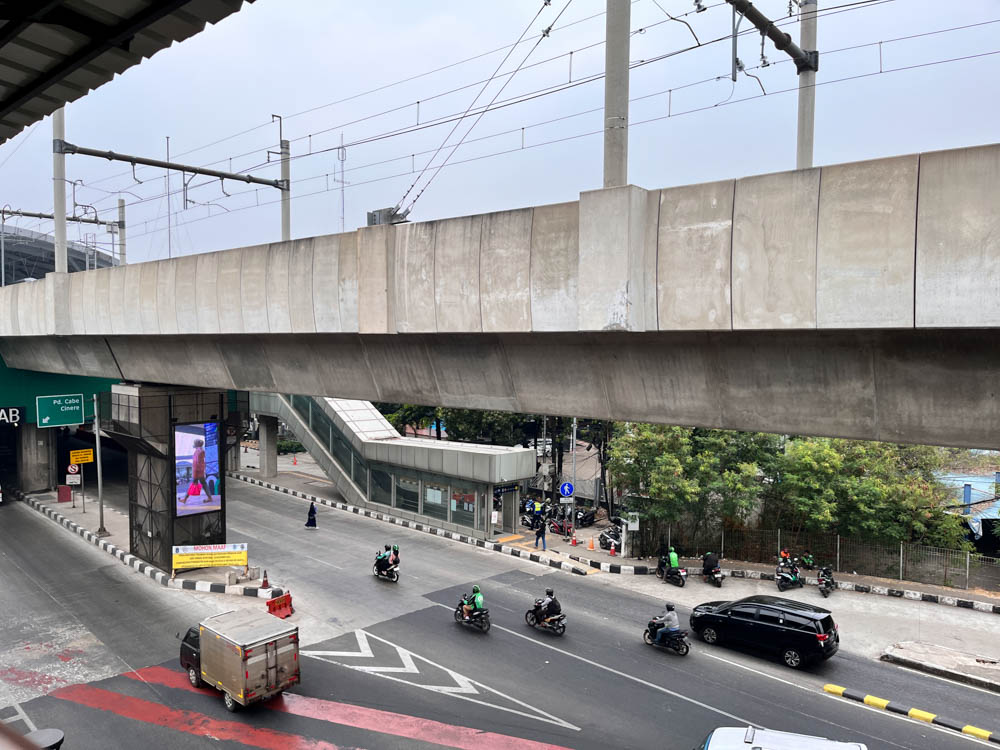
Now this is more of a Jakarta problem and not an indictment of the MRT, but it’s still a bit disappointing that more wasn’t (or couldn’t?) be done to improve walkability within the vicinity of more stations.
Final Thoughts
At the start of this post I characterised the Jakarta MRT as promising with “a lot to like”. That still holds true despite its flaws. It is a well built rapid transit line that helps take cars off Jakarta’s roads, and is presently being extended further into the city which will improve rail connectivity to areas previously not served by rail. Alongside all that it manages to be a pleasant experience to use on a daily basis, and is a world apart from the Jabodebek LRT with its multitude of issues.
One MRT line certainly isn’t sufficient to deal with the magnitude of Jakarta’s congestion problem but judging by what they have now, I’d say they’ve started off on a good footing.